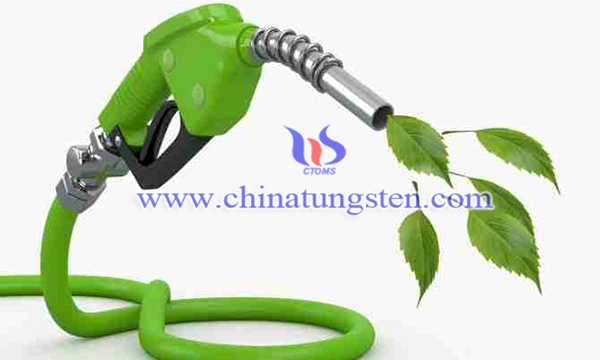WO3-Based Catalyst for Conversion of Glucose into Lower Diols
- Details
- Category: Tungsten Information
- Published on Saturday, 09 October 2021 22:39
Global warming caused by greenhouse gas emissions has become an unignorable threat to human survival. The increase in global mean temperature is directly proportional to the accumulation of carbon dioxide (CO2) emissions. Biofuels have become an attractive option to replace current petroleum-based liquid fuels.
The conversion of cellulose into various bulk chemicals such as lower diols: ethylene glycol (EG), 1, 2-propylene glycol (PG) and butanediol (BDO) has attracted significant attention worldwide in the past several decades. Thus, a WO3-based catalyst (silica-supported Ru-WO3) is designed for the selective hydrogenolysis of glucose to lower diols in a continuous flow fixed bed reactor system. The synthesis process of WO3-based catalyst is as below:

The silica-supported Ru-W catalyst was prepared on the commercially available silica gel (pore volume 1.06ml/g, average pore diameter 6.7nm, BET=451.2m2/g) by the incipient wetness impregnation method. The loading amounts of Ru and W are 1wt% and 10wt%, respectively. Before impregnating the silica with Ru and W precursors, the silica gel (5g) was treated with polyethylene glycol (5.305ml) by the incipient wetness dipping method at 323K for 1 hour. The samples were then dried in 393K air for 12 hours. After that, the pretreated silica support was impregnated with an aqueous solution (5.305ml) of ammonium metatungstate hydrate ((NH4)6H2W12O40·xH2O, Sigma-Aldrich Co.), and then dried in air at 393K for 12 hours. The sample was then calcined at 673K for 2 hours. Then the latter calcined sample was impregnated again with an aqueous solution (5.305ml) of ruthenium(III) chloride (Sigma-Aldrich Co.). After that, the sample was dried at 393K for 12 hours and then calcined in air at 673K for 2 hours. The resulting catalyst was named 1Ru10W-PEG. For comparison, a catalyst prepared by a similar procedure on a silica support without pretreatment was named 1Ru10W. All samples were crushed into particles (10MPa), crushed and sieved to retain 20-40 mesh particles for catalytic reaction testing without internal mass transfer resistance.

In conclusion, WO3-based catalyst was designed for the selective hydrogenolysis of glucose to lower diols in a continuous flow fixed bed reactor system. Based on the same W density (molW/m2) on the carrier, a smaller size of highly dispersed WOx clusters/particles can expose more surface active sites and more Ru-WOx interfaces, which will promote the breaking of Csingle bonds and C bonds Glucose passes through the RAC reaction at the WOx site and subsequent hydrogenation to reduce the formation of diols at the adjacent Ru0 site. Therefore, the 1Ru10W-PEG catalyst exhibits the best catalytic activity and selectivity. A glucose conversion rate of 98.2%, the lower glycol yield is as high as 91.7%.
- Tungsten Oxide Manufacturer & Supplier, Chinatungsten Online: www.tungsten-oxide.com
- Tungsten News & Prices of China Tungsten Industry Association: www.ctia.com.cn
- Molybdenum News & Price: news.molybdenum.com.cn
- Tel.: 86 592 5129696; Fax: 86 592 5129797; Email: sales@chinatungsten.com



 sales@chinatungsten.com
sales@chinatungsten.com